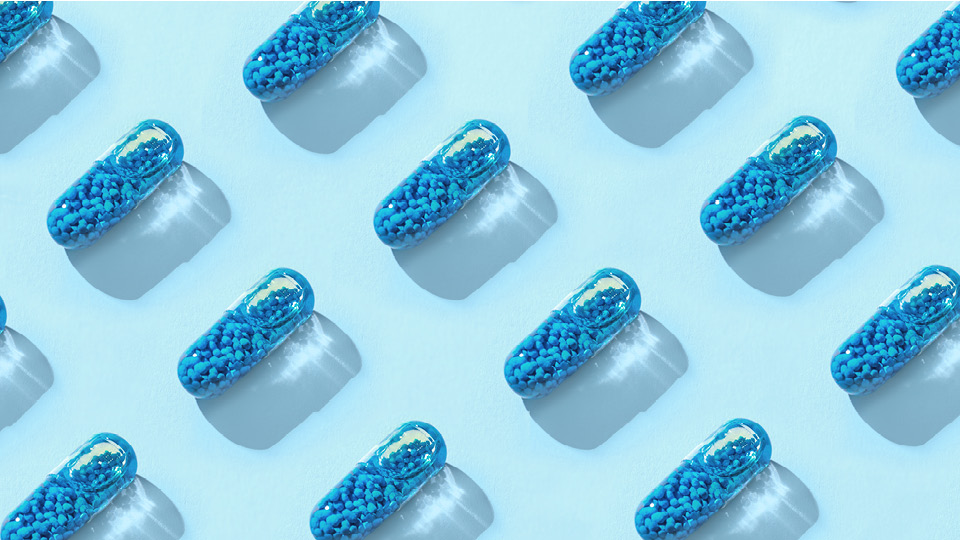Recharge NAD™ optimizes the production of energy in the cell and helps slow cellular aging by boosting your cells’ natural detoxification process. However, did you know you can further optimize Recharge NAD’s healthy aging potential by targeting your gut microbiome?
The Gut Microbiome: A Key to Healthy Aging
The gut microbiome, consisting of trillions of microorganisms, including bacteria, fungi, viruses, and protozoa, is one of the most active research areas in nutrition and medicine. According to PubMed, the most comprehensive database for scientific publications, there was one citation for “gut microbiome” or “gut microbiota” in 1977, which was the first year either term appeared. In 2021, there were over 13,000 citations, demonstrating the overwhelming scientific interest in this emerging area of research.
The gut microbiome influences overall health through myriad potential pathways or processes (1). These include extracting energy from foods, affecting the immune and gastrointestinal systems, and synthesizing vitamins and hormones. Moreover, the gut microbiome connects the all-important gut-brain axis, which raises the intriguing possibility that the microbiome influences feelings, moods, and cognition. Finally, the gut microbiome may help explain body weight changes and status.
Although it’s still not clear precisely what a “healthy” gut microbiome is, studies in healthy older adults suggest compositional diversity and richness of species, along with an increased abundance of certain probiotic bacteria compared to potentially harmful bacteria, are important characteristics for overall well–being. A healthy gut microbiome also contains probiotic bacteria that can metabolize dietary fiber into compounds like short-chain fatty acids that have beneficial effects on the digestive system (2). And unsurprisingly, your microbiome may also optimize the healthy aging potential of Recharge NAD.
A Healthy Microbiome is Required for Optimal Recharge NAD Benefits
Among the key bioactive ingredients present in Recharge NAD is broccoli seed extract. This extract is rich in a molecule called glucoraphanin. However, glucoraphanin itself is not what provides the extract with unmatchable detoxification benefits against age-promoting toxins and oxidative stress; rather, that benefit lies in the transformation of glucoraphanin to sulforaphane. Sulforaphane is a slightly pungent, unstable molecule and perhaps the most potent dietary activator of our detoxification processes (3,4).
Unfortunately, the transformation of glucoraphanin to sulforaphane requires abundant consumption of raw broccoli or the presence of a diverse gut microbiome rich in bacteria that facilitates this conversion (5,6). Indeed, recent studies have addressed the interindividual variability and modifying effect of the gut microbiome on this transformation. Although still in its infancy, this research suggests that a diverse and abundantly rich microbiome may enhance the production of sulforaphane and its prowess in detoxification.
Setting the Stage for a Healthy Microbiome
Diet has a profound influence on the composition and overall ecosystem of microbes in the gut. Fundamental components of a healthy lifestyle, such as adequate hydration, exercise, and healthy food choices, are obvious, but so too is consuming a diversity of foods. Optimizing the gut microbiome also requires a sufficient intake of soluble and insoluble dietary fibers and prebiotics such as oligosaccharides and resistant starches. Prebiotics are like other dietary fibers in that they are not digested but differ in that they have stronger modulating and beneficial impacts on the gut microbiome. Beyond increasing fiber and naturally occurring prebiotics from your diet, Isagenix offers several gut-healthy products to nourish your gut microbiome, including Isagenix shakes and bars, Fiber SnacksTM, Fiber ProTM, and BEA™.
References
- Gut_Microbiota_rev1029.pdf (netdna-ssl.com). Accessed 082422
- Wilmanski, T., Diener, C., Rappaport, N. et al. Gut microbiome pattern reflects healthy ageing and predicts survival in humans. Nat Metab 3, 274–286 (2021). https://doi.org/10.1038/s42255-021-00348-0
- Prochaska HJ, Santamaria AB, Talalay P. Rapid detection of inducers of enzymes that protect against carcinogens. Proc Natl Acad Sci U S A. 1992 Mar 15;89(6):2394-8. doi: 10.1073/pnas.89.6.2394. PMID: 1549602; PMCID: PMC48664.
- Kensler TW, Ng D, Carmella SG, Chen M, Jacobson LP, Muñoz A, Egner PA, Chen JG, Qian GS, Chen TY, Fahey JW, Talalay P, Groopman JD, Yuan JM, Hecht SS. Modulation of the metabolism of airborne pollutants by glucoraphanin-rich and sulforaphane-rich broccoli sprout beverages in Qidong, China. Carcinogenesis. 2012 Jan;33(1):101-7. doi: 10.1093/carcin/bgr229. Epub 2011 Nov 1. Erratum in: Carcinogenesis. 2012 Mar;33(3):722. PMID: 22045030; PMCID: PMC3276337.
- Fahey JW, Wehage SL, Holtzclaw WD, Kensler TW, Egner PA, Shapiro TA, Talalay P. Protection of humans by plant glucosinolates: efficiency of conversion of glucosinolates to isothiocyanates by the gastrointestinal microflora. Cancer Prev Res (Phila). 2012 Apr;5(4):603-11. doi: 10.1158/1940-6207.CAPR-11-0538. Epub 2012 Feb 7. PMID: 22318753; PMCID: PMC4618677.
- Bouranis JA, Beaver LM, Ho E. Metabolic Fate of Dietary Glucosinolates and Their Metabolites: A Role for the Microbiome. Front Nutr. 2021 Sep 22;8:748433. doi: 10.3389/fnut.2021.748433. PMID: 34631775; PMCID: PMC8492924.





